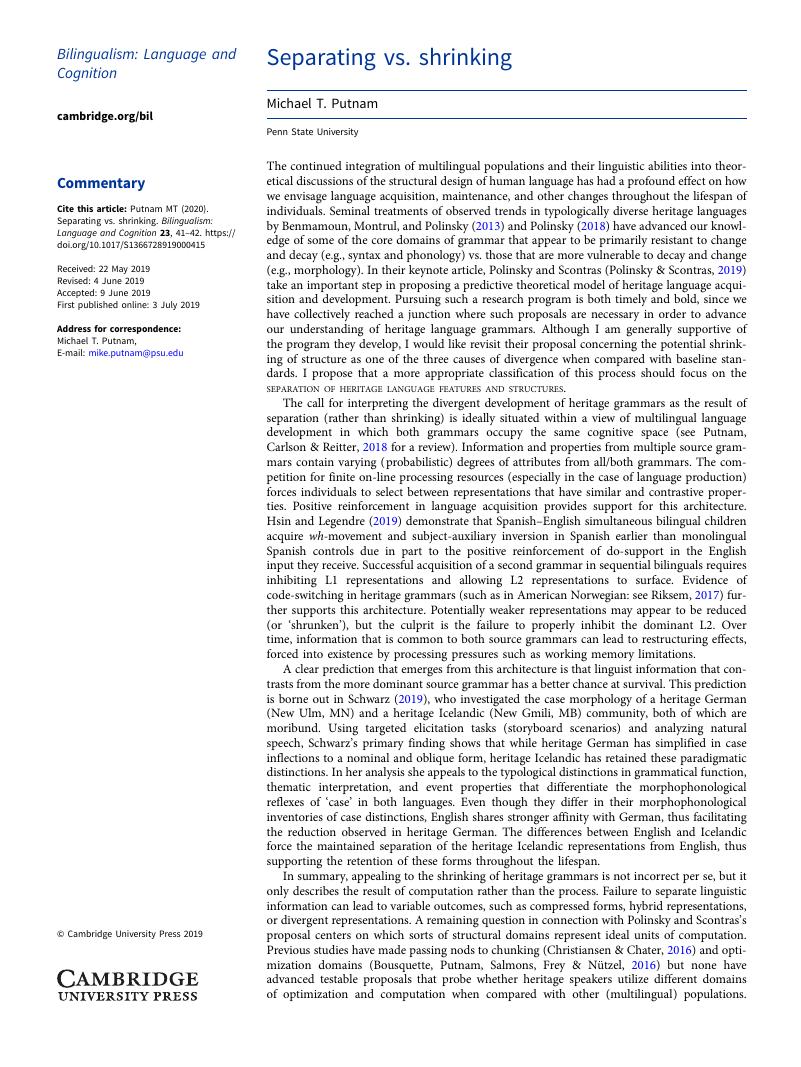Crossref Citations
This article has been cited by the following publications. This list is generated based on data provided by Crossref.
Lohndal, Terje
Rothman, Jason
Kupisch, Tanja
and
Westergaard, Marit
2019.
Heritage language acquisition: What it reveals and why it is important for formal linguistic theories.
Language and Linguistics Compass,
Vol. 13,
Issue. 12,
Abutalebi, Jubin
and
Clahsen, Harald
2020.
Heritage languages, infants’ language recognition, and artificial grammars for bilingualism research.
Bilingualism: Language and Cognition,
Vol. 23,
Issue. 1,
p.
2.
Kisselev, Olesya
Dubinina, Irina
and
Polinsky, Maria
2020.
Form-Focused Instruction in the Heritage Language Classroom: Toward Research-Informed Heritage Language Pedagogy.
Frontiers in Education,
Vol. 5,
Issue. ,
Lohndal, Terje
2021.
The Cambridge Handbook of Heritage Languages and Linguistics.
p.
644.
2021.
The Cambridge Handbook of Heritage Languages and Linguistics.
p.
579.
Repiso-Puigdelliura, Gemma
and
Kim, Ji Young
2021.
The missing link in Spanish heritage trill production.
Bilingualism: Language and Cognition,
Vol. 24,
Issue. 3,
p.
454.
Putnam, Michael T.
and
Søfteland, Åshild
2022.
Mismatches at the syntax-semantics interface: The case of non-finite complementation in American Norwegian.
Nordic Journal of Linguistics,
Vol. 45,
Issue. 3,
p.
310.
Kim, Ji Young
2023.
Spanish–English Cross-Linguistic Influence on Heritage Bilinguals’ Production of Uptalk.
Languages,
Vol. 8,
Issue. 1,
p.
22.



